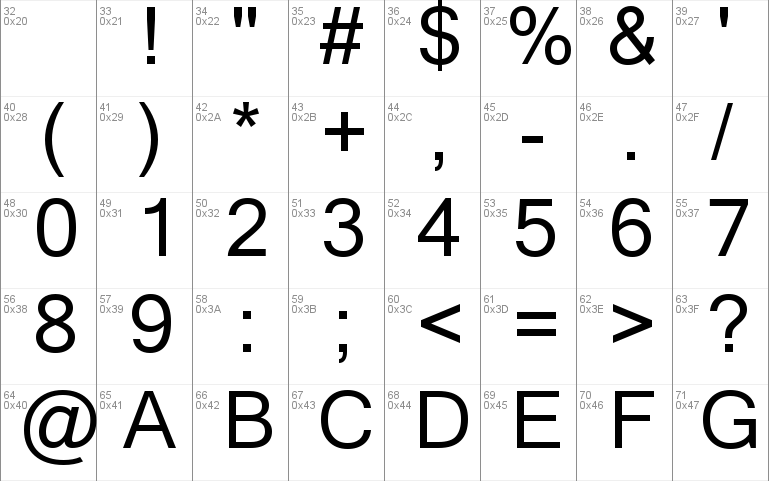

- #Size 8 microsoft sans serif font update
- #Size 8 microsoft sans serif font code
- #Size 8 microsoft sans serif font download
Additionally, it helps show that with new system versions, come new fonts, and thus the possibility of needing to update your font stack. The reason for the preface is that it shows how deep you may need to go back to support system fonts. What are those system fonts? At the time of this writing, it breaks down as follows: The beauty of “system” fonts is that it matches what the current OS uses, so it can be a comfortable look. That’s true of any “web safe” font, though.
#Size 8 microsoft sans serif font download

vbf files I did that and still did'nt like the results.Īny other favorite ui fonts to replace MS Sans Serif 8 point? However there is an an intermediate Tahoma point size of 8.4 it cannot be set from the VB6 IDE (where setting 8 gives you 7.8, setting 9 gives you 9.2, the ui will not accept decimals) but can be set by editing. At 9 (9.2 in a vbf file) point it appears too big. vbf file) point it appears significantly smaller (narrower) than MS Sans Serif at the same point size. So the next choice was Tahoma (the UI font in W2K and XP), at 8 (7.8 in a. On monitors running >96dpi Microsoft Sans Serif looks fine.Īlong the way I considered the Segoe UI font, but that is only installed by default in Vista and 7, I needed support back to W2k. Setting ClearType Fonts improves appearance a little. That did the trick but I still prefer the look of the old font on monitors running at 96dpi. The switch was pretty painless from the coding point of view because the width of the 2 fonts is very near identical. I came accross this issue a couple of months ago in a big old app in the end I replaced all references in the ui to MS Sans Serif (Bitmap) to Microsoft Sans Serif (TruType). Avoiding bitmap fonts in VB6 programs helps a lot, but VB6 defaults to MS Sans Serif so you see a lot of funky looking Forms out there these days. Net WPF, but the result was things like "fuzzy fonts" effects until VS 2010, which has addressed most of those issues.
#Size 8 microsoft sans serif font code
This was based on flawed metrics, because Windows 7 adoption has been slower among those who (a.) don't buy hi-res monitors until prices fall and the market takes their choices away and (b.) use legacy applications and those created with older development tools.įor example they haven't and won't do squat about updating VB6 to accomodate this more easily, so those of us who must deal with it have to use more and more API-level code to deal with it.


Microsoft underestimates the impact of this decision in Follow-up on High DPI resolution, suggesting that High DPI defects only impact about 9% of applications. Right now it's only an issue for those who spend too much on monitors: it only kicks in somewhere around 1920x1080 resolution. Yes, the fact that Windows 7 will automatically shift a new machine into High DPI settings will probably impact more and more people over time.


 0 kommentar(er)
0 kommentar(er)
